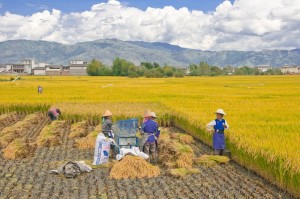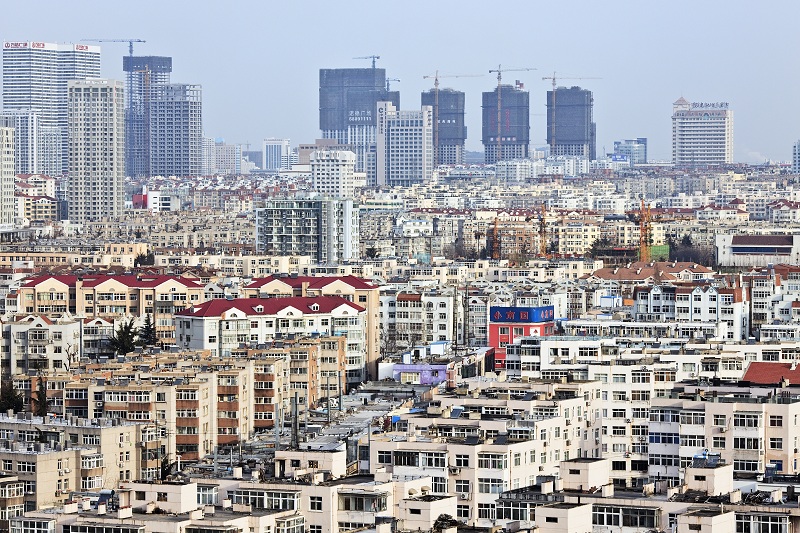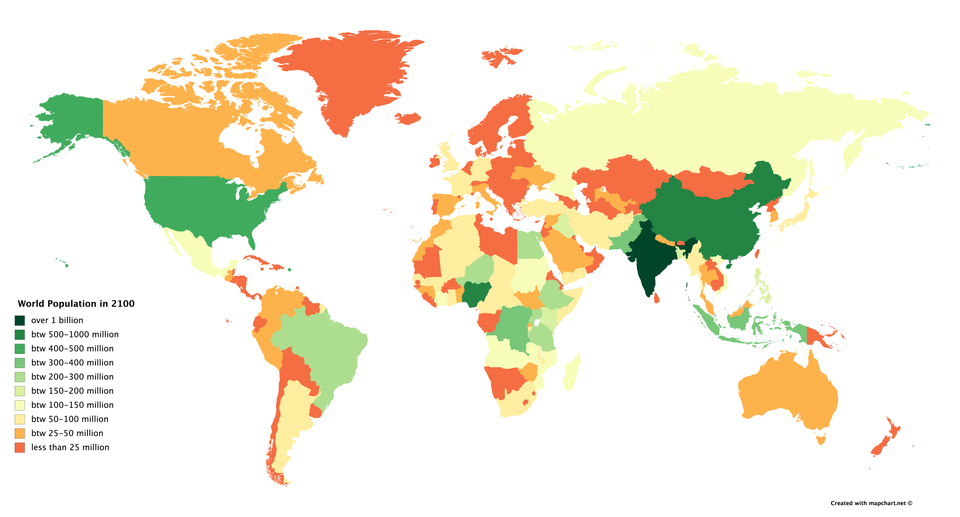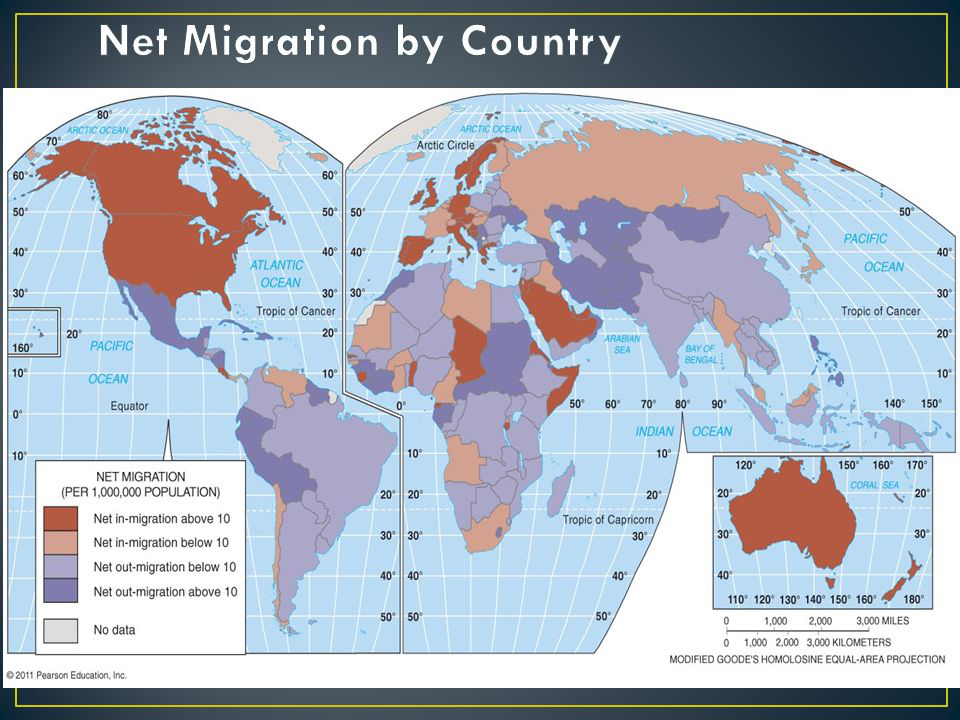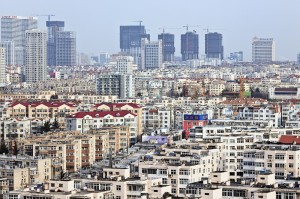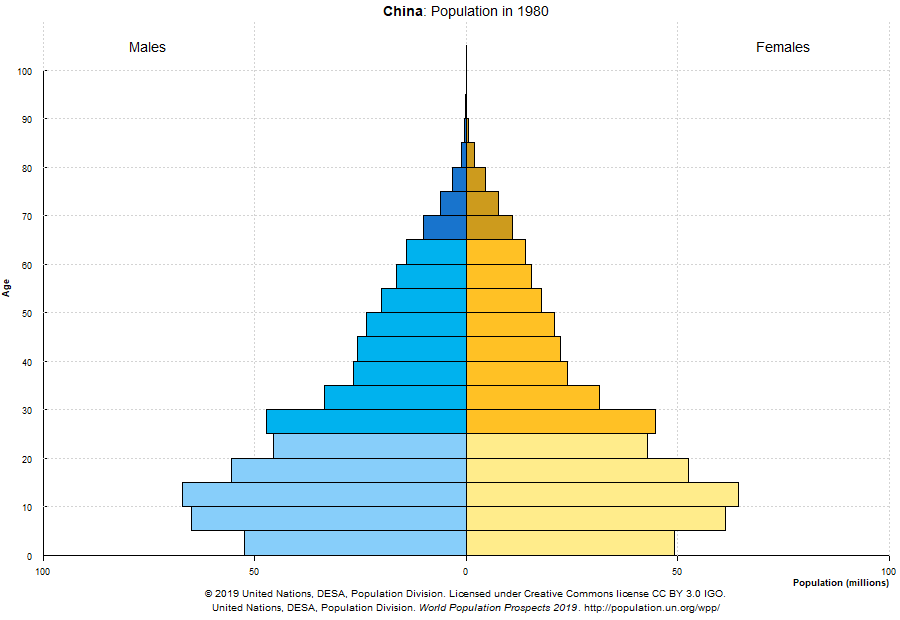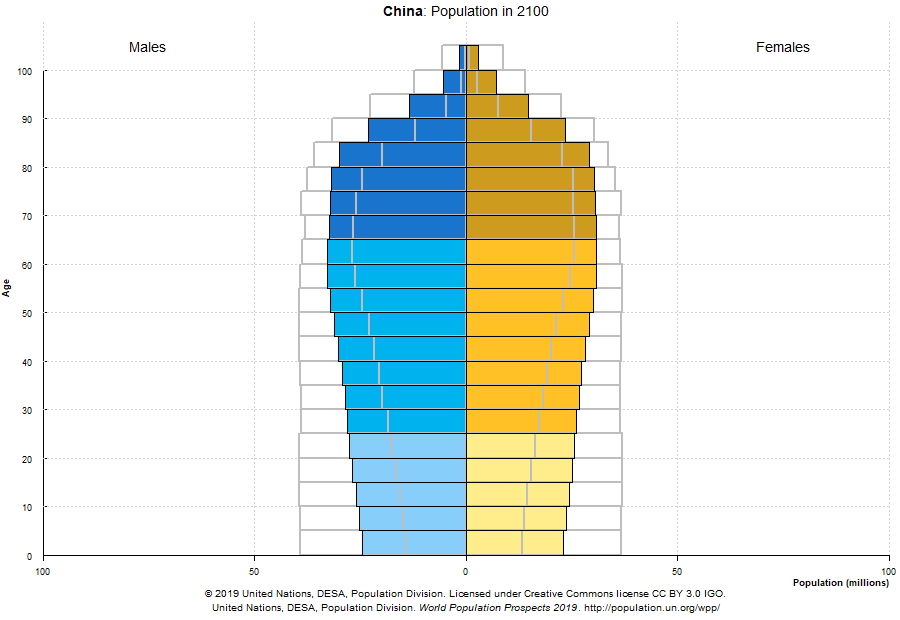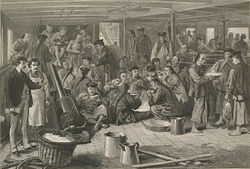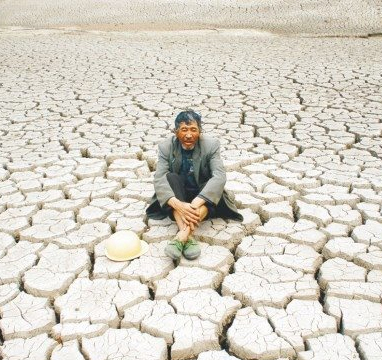Water in China: A Thirsty Country
Introduction
China faces severe water shortages. Its current water per capita is one quarter of the world average, yet its overall per capita usage is still low by international standards, but this will increase over the coming decades. The water that China does have is often badly polluted and is inefficiently used. Moreover, China’s water is unequally distributed with the Yangtze River basin and areas to the south enjoying 84% of China’s naturally available water compared with just 16% in China’s north.
China’s water scarcity will challenge its future economic expansion. Already, agriculture, industry and China’s growing cities all compete for scarce water resources, as do China’s different regions. Decades-old economic priorities such as food self-sufficiency will be increasingly difficult to maintain because water used in industrial output creates more economic value than it does in agriculture. Water scarcity also creates domestic unrest. Increasing illness caused by polluted water is driving up healthcare costs and generating more internal dissent. In 2009, the Chinese government acknowledged that 90,000 “mass incidents” (a euphemism for protests) occurred, many of which were sparked by environmental and water degradation.
Population and its Impact on the Hydrological Cycle
Right from China’s earliest dynasties great attention was paid to agricultural productivity. The Chinese bureaucracy mobilized the Chinese masses to construct irrigation systems and to clear land. This created an agriculture-population feedback loop. Increased agricultural productivity led to a rise in population, requiring further hydro-engineering and agricultural innovation to maintain China’s swelling numbers. In an agrarian society, large families of many sons offered rural parents security both in terms of providing labor for farming and care in old age. In this way, China has remained the world’s most populous country for thousands of years. China is still the world’s most populous country today. In 2019, China’s population was approximately 1.434 billion people. By 2035, China’s population is expected to peak at 1.461 billion people. By 2050 and 2100, China’s population will reduce to 1.402 billion and 1.064 billion, respectively.
China’s large population today has risen in part because of a significant population surge between 1950 and 1980. During the period, China’s population grew from 554 million to just over 1 billion people. In order to feed its enormous and rapidly growing population, Mao mobilized its masses to create new agricultural and grazing land through the clearing of forests, the filling of lakes, the draining of swamps and wetlands, and the creation of large irrigation projects. While placing more agricultural land under plow and significantly expanding its irrigation networks, this significant transformation of China’s natural environment into an agricultural environment has impacted China’s hydrological cycle. When land is cleared of plant life through unsustainable farming and grazing methods, the local hydrological cycle is disrupted, and desiccation – the drying out of the environment – occurs. Instead of catching precipitation in the region and allowing rain to repeatedly return to the area hrough the process of evapotranspiration, deforestation, over-grazing and over-farming causes surface water to run immediately into streams instead of permeating the soil. In the north and northwest of China, it has been estimated that the average annual precipitation has decreased by one third between the 1950s and the 1980s; overall China has 350 billion m³ less water than it had at the start of the century equivalent to the amount of water that flows through the mouth of the Mississippi River in nine months.
China’s Significant Desertification
Approximately 28%, around 2.5 million km², of China’s land is desert or suffering desertification. China’s deserts have expanded significantly over the last six decades. China’s Environmental Protection Agency reported, for instance, that the Gobi Desert grew by 52,400 square kilometers (20,240 square miles) from 1994 to 1999. Overall, China’s semi-arid regions have increased 33% during 1994–2008 compared to 1948–62, and its deserts continue to expand at an estimated rate of 1,300 square miles a year. In addition to topographical and geographical conditions, factors driving China’s desertification include over-cultivation, overgrazing, pollution, wind erosion, water erosion, salinization of soils through over-irrigation, over-cutting firewood, water misuse, and industry and mining-related land destruction.
The cost of desertification is real. It is estimated that China loses approximately $6.8 billion annually from its growing deserts and arid lands. Desertification leads to depreciated land values, food insecurity resulting from reduced crop yields, heightened healthcare issues, and increased costs resulting from land protection efforts. Desertification and deforestation have also caused sediment levels to significantly increase in all of China’s river systems due to severe soil erosion. Greater soil levels in river water can impact the functioning of China’s many hydropower systems.
To fight China’s desertification, China unveiled the Great Green Wall program. Launched in 1978 and targeted to continue until 2050, the program’s objective is to plant a shelterbelt of trees across the northwest rim of China skirting the Gobi Desert. The Great Green Wall is expected to be 4,480 km long and 560-1460 km wide. To date, an estimated 66 billion trees have been planted.
However, this massive reforestation program has been controversial. Much of the shelterbelt area, except for areas to the east, is not highly suitable to forest growth. Trying to plant trees in ecosystems not suited to forest can diminish biodiversity, reduce water recharge, and cause a loss of soil quality and moisture. Additionally, China has tended toward the planting of a single species of trees over large areas. In Ningxia, for example, 70% of the trees planted were poplar and willow. Monocultures tend to be more vulnerable to disease. In 2000, for instance, one billion poplar trees were lost to disease, wiping out 20 years of planting effort. Additionally, monocultures do not increase biodiversity as they are not appropriate either for plants and animals normally found in the native, dry-land ecosystems or for the animals and plants that might want to migrate to newly forested ecosystems.
Another disadvantage of planting trees on grasslands is that they tend to absorb large amounts of groundwater. In Minqin, an area in north-western China, studies have shown that groundwater levels dropped by 12–19 metres since the advent of the project. As these trees absorb water levels, shallower-rooting native shrubs and grasses can die off. When this occurs, the soil on the forest floor is susceptible to wind erosion, the very challenge that the trees were planted to thwart. As evidence of this risk, sand storms from wind erosion have become more frequent despite China’s herculean tree-planting efforts. Fifty years ago, dust storms plagued China about once every seven or eight years; now they occur annually.
Given the challenges of the Great Green Wall, there is growing realization shrubs and grasses native to the region may be much more effective in restoring degraded dry lands and holding sand in place. As a result, there has been some movement toward replacing the planting of trees with the sowing of native flora.
Water Scarcity
Overall, China is an extremely arid country. As China’s population has swelled over the millennia, its per capita water has decreased. China now has an estimated 2,029 m3 of water per capita per annum, one quarter the world’s average. This per capita water figure is projected to decrease to 1,875 m³ by 2033. This water scarcity is exacerbated by China’s uneven water distribution. China’s precipitation patterns are heavily affected by the East Asian monsoonal climate. Its mountainous geography impedes and drains the monsoonal rains as they move from the southeast into the northwest of the continent. On average, southern China – including the Yangtze River basin and areas to its south – has approximately 80% of China’s water, yet the area supports 54% of its population, 35% of its arable land, and 55% of its GDP Conversely, northern China collected only 20% of China’s water to maintain 46% of the population, 65% of the arable land and 45% of its GDP. In some northern areas, strains on water resources are even worse. Beijing’s and Tianjin’s Hai River basin, for instance, receives approximately 1.5% of China’s water to support 10% of its population and 11% of its arable land. Moreover, 47% of total industrial output is fabricated in China driest 11 provinces including: Beijing, Gansu, Hebei, Henan, Jiangsu, Liaoning, Ningxia and Shandong. These 11 water-parched provinces account for just 7% of China’s total water resources but produce 36% of China’s agricultural production and 43% of total GDP while supporting 38% of the population.
Approximately 400 of China’s cities currently face water shortages, and over 300 million people drink water contaminated with pollutants including arsenic, excessive fluoride, toxins from untreated factory wastewater, agricultural chemicals, leaching landfill waste and human sewage. Moreover, China’s per capita water footprint is growing. China will not only have more people competing for its finite water resources in the coming decades, but each person will individually demand more water. Today, China’s overall water footprint per capita is still about half that of the US but is expected to grow by between 40% and 50% by 2030. Factors such as higher living standards, increasing urbanization and further industrialization are driving water demand. China’s rising wealth has meant, for instance, that its citizens are eating substantially more meat. The production of one kilogram of beef requires 600 liters of water compared with the 100 liters required for a kilogram of wheat. This shift in diet can be seen in China’s food footprint numbers. In 1961, China used 260 m³ of water per capita to grow food; by 2003 this figure had more than trebled to 860 m³.
Agricultural, Urbanization, Industrialization, Water Wastage
Currently, 62% of China’s water is used for agriculture, a sector which is responsible for approximately 13% of the country’s GDP. About 50% of China’s farmland requires irrigation, more than double the world average. Nearly 75% of total grain production and over 90% of China’s cash crops are sown on irrigated farms. According to China Water Risk, irrigation water usage was approximately 340 billion m3 in 2013, equal to the average annual flow from China’s Pearl River, China’s third longest river. Yet agriculture water usage remains extremely inefficient, with an estimated 45% of agricultural water lost before it even reaches crops. By contrast, water used for industrial output is 70 times more productive in terms of financial value than that used in wheat production.
That said, the water productivity of Chinese industry is also low by international standards. The industrial added value per 10,000 yuan of water consumption is about 50 m³ compared to 7-9 m³ in developed countries. Additionally, the industrial water recycling rate is less than 50% compared to 85% in developed countries. Overall, China’s overall water productivity – calculated by dividing GDP by annual total water withdrawal – remains low: $15 in 2015 compared with $318 for the UK, $115 for Singapore, $103 for Germany, $67 for Japan, and $36 for the United States.
China’s growing urbanization is also requiring more water per capita. 70% of Chinese citizens are projected to be living in cities by 2030, up from 59% today. This is significant because urban dwellers consume three times as much water and energy as rural residents. Between 2000 and 2020, for instance, the World Bank estimated that China’s urban water consumption increased by 60% as its urbanization rate rose from 36% in 2000 to 57% in 2020. Moreover, more urban dwellers will require more electricity. Currently, it is estimated that 59% of China’s primary energy consumed was powered by coal. Coal requires more water to produce them all other energy sources. Moreover, over half of China’s coal deposits are found in its north, the Chinese region which suffers from the most water scarcity. Coal mining, processing, combustion, and coal-to-chemical industries are the country’s second largest water consumer after agriculture. Therefore, consuming more coal to produce more electricity will put additional stress China’s limited water resources. Finally, China’s urban water distribution networks are particularly leaky. In 2002, an investigation of 408 cities conducted by the Ministry of Construction found that urban water supplies lost an average of 22% of their total water flow.
Water Pollution
Despite China’s efforts over the last three decades, water pollution has spread from the coastal to inland areas and from the surface to underground water resources. An estimated 70% of China’s rivers and lakes are now polluted. In 2009, 57% of the 7 monitored river basins had pollution levels of I-III, suitable for drinking, swimming, household use, and able to support aquatic life. 24% of China’s rivers had levels of IV-V, water unfit for swimming, but suitable for industrial purpose. 19% had V+, meaning that the water is considered useless, unfit for industry or agriculture and unsafe for human contact even after treatment. 23% of China’s key lakes and reservoirs had water grades of I-III, 42% IV-V and 35% V+. 2.3% of groundwater in 8 regions was rated I-II, 23.9% was graded III, and 73.8% ranked IV-V.
Causes of water pollution include the disposal of industrial chemicals and waste, agricultural waste, and residential wastewater. Of these pollution sources, approximately 70% of the water pollution nationwide comes from agriculture, particularly runoff from fertilizers, pesticides, and animal waste. For millennia, China’s farmers produced agriculture through “organic” farming methods. Farmers collected every bit of organic waste to ferment for fertilizer. Nothing was wasted, and even human waste, or “night soil”, went into “honey buckets” to transport to the fields. Every winter and spring farmers dredged nearby rivers and canals to add sediment to the fertilizer. Particularly in the south, dense grass at the water’s edge was added to pig fodder, which, after being digested by the pigs, produced manure, and helped keep the rivers and lakes clear from vegetation. The entire process of recycling was labor-intensive but efficient. The rivers and lakes remained relatively clean despite thousands of years of intensive farming.
Yet, since 1978, fertilizer applications in China have increased fivefold. In general, animal and human feces are no longer collected for fertilizer, and instead are discharged untreated into rivers.
In addition to causing pollution, fertilizer runoff is also raising the instances of eutrophication. Although blooms of aquatic biomass are spurred by a variety of factors including nutrients, light, temperature, water flow, turbidity, zooplankton grazing and toxic substances, the main factor contributing to the growth of algae is the supply of nutrients. Chemical fertilizer runoff has significantly accelerated eutrophication of many of China’s lakes such as Dian Chi in Yunnan Province, Chao Hu in Anhui Province and Tai Hu in Hubei Province where algae blooms absorb a significant portion of the lake’s oxygen, choking off fish and other aquatic life. Large algae blooms also broke out right before the 2008 Olympics, forcing Beijing to launch a massive emergency clean-up to ensure the sailing events could go ahead as scheduled in Qingdao, in Shandong.
In addition to pollution caused from fertilizer and pesticide runoff, rural areas also contribute to contamination by poor wastewater management. According to the 2017 China Statistical Yearbook, for instance, while nearly 95% of municipal wastewater generated by urban residents was treated, this number dropped to 25% for rural residents. Additionally, small-scale rural enterprises have less rigorous environmental monitoring, but frequently engage in all manner of heavily polluting production, such as the operation of paper mills, tanneries, and breweries. Pollution from the small-scale rural enterprises is aggravated by the fact that they are more likely to use outdated equipment and have less resources to spend on pollution abatement.
About 80% of China’s 7500 most polluting factories are located on rivers, lakes, or in heavily populated areas. While occurring less frequently than in the past, these factories have been known to release untreated waste and chemicals into China’s waters either intentionally or by accident. Example of this is the 2012 cadmium spill in Guangxi which polluted an approximately 100 km stretch of the Longjiang River at a level of more than five times the official limit, contaminating water supplies for Liuzhou, a city of 3.2 million people. Cadmium is poisonous and can cause cancer. Another example is the 2020 Heilongjiang province spillage of 2.53 million cubic meters of water containing molybdenum ore waste into the local river system. The spill contaminated water for 110 km southwest of the mining site, where the chemical oxygen demand reading (DOC) – a measure of water quality – was 5.7 times higher than standard levels.
China’s factories also release dangerous airborne pollutants that are absorbed into groundwater or contaminate rivers by way of urban runoff. Some of the most harmful are categorized as polycyclic aromatic hydrocarbons (PAHs), and an estimated 90% of water located in sources near Chinese cities is now dangerously polluted because of their presence.
Economic and Health Cost of Water Pollution
 The World Bank estimated that China’s water crisis is reducing China’s GDP by approximately 2.3% annually, with 1.3% attributable to water scarcity, and the other 1% caused by the cost of water pollution estimates do not include the costs of ecological deterioration caused from the eutrophication of lakes and rivers. Nor do they reflect the economic cost of disease caused by water pollution, conservatively estimated at an additional 0.5% of GDP. In China’s most polluted areas, water has also been blamed for the recent high rates of various health abnormalities including liver and stomach cancer, stunted growth, miscarriages, and birth defects. This pollution can also be absorbed through China’s food supply. In 2011, it was estimated that up to 10% of China’s rice crop might contain unsafe or nearly unsafe levels of cadmium because of widespread irrigation with cadmium-poisoned water. A more targeted 2014 Greenpeace study testing rice harvested in Hunan province near a smelting site found that the rice contained dangerously high levels of cadmium, lead and arsenic.
The World Bank estimated that China’s water crisis is reducing China’s GDP by approximately 2.3% annually, with 1.3% attributable to water scarcity, and the other 1% caused by the cost of water pollution estimates do not include the costs of ecological deterioration caused from the eutrophication of lakes and rivers. Nor do they reflect the economic cost of disease caused by water pollution, conservatively estimated at an additional 0.5% of GDP. In China’s most polluted areas, water has also been blamed for the recent high rates of various health abnormalities including liver and stomach cancer, stunted growth, miscarriages, and birth defects. This pollution can also be absorbed through China’s food supply. In 2011, it was estimated that up to 10% of China’s rice crop might contain unsafe or nearly unsafe levels of cadmium because of widespread irrigation with cadmium-poisoned water. A more targeted 2014 Greenpeace study testing rice harvested in Hunan province near a smelting site found that the rice contained dangerously high levels of cadmium, lead and arsenic.
China has also seen a rise in cancer rates. Contemporaneously with the rise in pollution levels in China’s lakes and rivers, digestive tract cancers including stomach, liver and esophagus have also risen and are now responsible for approximately 36.4% of cancer-related deaths in China compared to less than 5% of total cancer deaths in either the US or the UK. Additionally, there have also been incidents of contaminated river water from industrial activities leading to outbreaks of cancer concentrated in some villages. These villages have become colloquially known as Aizheng Cun, which literally translates as “Cancer Village.”
Flooding – Yellow River and Yangtze River
Not only are desertification and deforestation exacerbating China’s water scarcity, they are also aggravating China’s flooding challenges. The Chinese Minister of Water Resources, Chen Lei estimated in 2007 that China has lost 2% of national GDP annually to flooding since 1990 and a recent study placed the total costs of floods from 2000 to 2012 at 105 billion RMB annually (US $17 billion). Flooding has challenged Chinese rulers for millennia. From 602 BCE to 1938 AD it is estimated that major collapses of Yellow River dikes occurred once every two or three years. Then, every hundred years or so, the river would change its course. Many of the resulting floods were some of the deadliest natural disasters ever recorded. For millennia, the Chinese constructed dikes along the lower reaches of the Yellow River trying to contain its torrents, yet constant ecological destruction along the upper reaches increased erosion which intensified river silting. The silting raised the riverbed above the countryside. This “suspended” river greatly increased flood damage when the river inevitably breached its dikes. After 1949, the CCP built almost 3000 dams on the Yellow River, and heavily reinforced its levees and embankments. These hydro-engineering projects involved the equivalent of 500 million workdays and 1.4 billion m³ of reinforced concrete – enough to build 13 Great Walls. Yet many of the Yellow River’s dams have fallen short of physical and economic targets, and have resulted in huge losses of forest lands, wildlife habitat and aquatic biodiversity. Global warming has also increased evaporation at many of the dam sites.
Similarly, parts of the Yangtze River have flooded continually for millennia. Yet, as deforestation and reclamation of land has increased, floods have become more frequent and more destructive. The CCP attempted to solve the flooding by increasing the height of 3,600 km of embankments and more than 30,000 km of levies. The work required more than 4 billion m³ of dirt and stone, or enough material to put a wall around the globe three times. Yet these raised structures could not offset the loss of water absorption capacity caused by the rapid deforestation and agricultural land reclamation that occurred during the same period. As a result, the Yangtze experienced a series of significant floods in 1980, 1981, 1983, 1991 and 1996. Then in June 1998, China suffered one of its worst floods in 40 years, leaving 3,700 people dead, 15 million homeless and causing $26 billion of economic damages. The reinforced embankments and levees proved largely ineffective, with approximately 9,000 of them collapsing. As well as providing hydropower and improved navigation, the controversial Three Gorges Dam was built in large part to control the Yangtze’s flooding, although many scientists believe that the Yangtze is still vulnerable. Additionally, after the 1998 flood, China began to place greater importance on the role of ecology in flood prevention and has begun an extensive campaign of reforestation and forest preservation.
Drought
Because of the variability of the monsoonal rains and other factors, like flooding, drought has plagued the country for millennia. Yet desiccation, reduced precipitation and rising temperatures in many areas have made China’s droughts more frequent with longer durations extending over greater areas than at any previous time. For instance, research has shown that since 1980, severe droughts in China’s northeast have increased in frequency, severity, and duration. Between 1960 and 1980, acute droughts struck approximately once a decade. From 1980 onwards, droughts have occurred with greater frequency: in 1981, 1986, 1992, 1994, 1997, 2000, 2001, 2005-2007, 2010, 2017-2018, 2019, 2020. China’s southwest to northeast belt was the area most affected by drought. Regions most impacted include Inner Mongolia, Hunan, Yunnan, Hubei, Jilin, Anhui, Sichuan, Liaoning, Guizhou, and Shandong.
Although difficult to pinpoint specifically, it is estimated that China lost $7 billion annually due to the economic cost of drought between 1984 in 2017. If global warming continues apace, these economic losses could increase to between $47 billion annually if temperatures rise an additional 1.5°C to $84 billion if global warming drives temperatures above 2°C. China has been essentially self-sufficient in grain for decades. This self-sufficiency camouflages the fact that China produces one-sixth of the world’s wheat output and one-fifth of global corn. China is thus enormously important to the world’s food supply. If drought significantly disrupted China’s food production on a large-scale, it could significantly impact world food prices. The risk is real. In every year since 2005, drought has challenged China’s grain crops, and the government has been forced to spend billions of dollars digging wells and cloud seeding to encourage rain. In 2010-201, northern China suffered its worst drought in 60 years, impacting most of China’s wheat producing regions. At its peak, it is estimated that 36% of China’s northern wheat fields were affected, and that 2.57 million people and 2.79 million livestock suffered from a lack of water. The water shortages also affected around 161 million people, with an economic cost estimated at $2.8 billion. In 2017, China’s Inner Mongolia region experienced a severe drought which affected 120,000 people and 500,000 livestock and 16 million acres of pastureland. It is estimated that the drought caused economic losses of approximately $780 million. In 2019, China’s Hebei province experienced a serious drought which impacted almost 800,000 ha of cropland and left 15,700 people and ,3000 domestic animals with diminished access to drinking water.
Drought has not been restricted to China’s drier north. In western Sichuan, for example, rapid deforestation caused Sichuan’s forest cover to fall from 3.6 million hectares in in 1985 to 2.34 million hectares in 1995 which has led to decreased precipitation. In the 1950s, serious droughts hit Sichuan about once every three years. In the 1960s, this became once every two years and by the 1980s, drought troubled Sichuan counties annually. In 2010, more than 20 million people in Yunnan, Guangxi, Guizhou, Sichuan, and Chongqing were left without adequate drinking water and a 2011 Sichuan drought affected almost 8 million people. Looking at drought conditions in Guangxi province specifically, records show that from 1618 to 1943, major droughts hit the region once every 33 years. From 1946 to 1972, the interval fell to every six years, and in the 1980s, it fell to every two years. There were four major droughts in the three-year period from 1989 to 1991. Since 2000, drought has plagued Guangxi annually. In 2004, for instance, 1100 Guangxi reservoirs went dry, and hydropower generation was cut dramatically. In 2007, one million residents in Guangxi and 250,000 in neighboring Guangdong faced water shortages during the worst regional drought in more than 50 years. In 2009, Guangxi, which produces 60% of China’s sugar cane, had a 10% drop in its production due to drought conditions. In 2010, 12 of the 14 cities in Guangxi were affected by water shortages. As another example, in 2019, Anhui Province, was plagued by the worst drought it had experienced in 50 years. Rainfall was at only 40% of normal levels. The neighboring provinces of Hubei, Jiangsu, Jiangxi and Zhejian were also significantly impacted.
Climate Change
How climate change will impact China’s water scarcity is still being studied. A study published by the Proceedings of the National Academy of Sciences estimated that drought related losses caused China approximately $7 billion annually between 1984 in 2017. If temperatures were to rise 1.5°C, these losses could grow to $47 billion annually. Above 2°C, drought losses could rise as high as $84 billion annually. Overall, however, a clear understanding of the impact of climate change on China’s water resources and agriculture is not definitive. Most scientists agree that more work is needed on regional climate simulations-especially simulations of precipitation-to better understand how a warming environment will impact everything from crops to diseases to future per capita water resources. (Piao, 2010)
What is definitive is that global warming is having an undeniable effect on the Tibetan Plateau. Like the Arctic and Antarctic, the Tibetan plateau is warming three times faster than the global average at .3°C per decade. In Tibet’s case, this accelerated warming is driven significantly by its Tibet’s high elevation which averages 4,500 meters. The plateau holds the largest amount of snow and ice after the Arctic and Antarctic, an estimated 14.5% of the global total including 46,000 glaciers. The plateau is also the source of 10 of the world’s largest rivers including the Yangtze, Yellow, Ganges, Brahmaputra, Mekong, and Indus Rivers which in turn provide water to over 1.6 billion people. An estimated 80% of Tibet’s glaciers are now melting more quickly than originally thought. Many Chinese scientists believe that one-third of the glacial area in Tibet will disappear by 2050, and half will disappear by 2100.
Greater melting rates will have several effects. Melting glaciers often create glacial lakes dammed by unstable moraines. These moraine dams can unexpectedly burst, causing catastrophic flooding. Greater glacial melt water in the short term will increase river runoff. In the long term, as glaciers diminish or disappear, the resulting depletion of meltwater runoff is likely to deplete the year-round viability of Tibetan originating rivers, threatening the lives and livelihoods of billions of people downstream.
Power Outages
China’s water scarcity has also resulted in lower water levels of many of China’s major river systems. For instance, Chinese researchers have discovered that the volume of water entering the Yangtze River at its source on the Tibetan plateau has dropped by 15% over the last four decades. Similarly, a study regarding Yellow River water found that runoff has runoff decreased significantly between 1956 and 2009. Moreover, a 2013 study conducted by China’s Ministry of Water not only corroborated that the Yellow and Yangtze Rivers are experiencing declining water levels, but also found that approximately 28,000 of China’s original 50,000 rivers have now disappeared. Part of the reason for the disappearing rivers has been attributed to improved mapping techniques; however, the fact that rivers are disappearing has been validated by other studies. Other rivers, especially in the north, have become seasonal rivers flowing most strongly during the spring melts.
Diminishing flow levels in China’s rivers mean that the country will be challenged by power outages due to inadequate flow through its hydropower dams. Hydropower accounts for approximately 22% of China’s total installed capacity. It is estimated that the lack of water to run hydropower dams has cut hydroelectric power production by 20% and China may be forced to burn 1 million more metric tons of coal a week to cover the shortfall.
Trends
Serious water scarcity looms in China’s future. This scarcity is likely to increase competition between Chinese regions, between sectors of the economy and between urban and rural residents. It will also raise tensions between the government and parts of society that lack access to adequate, clean water sources. Moreover, the Tibetan Plateau is a source of rivers that reach 16 downstream countries including Pakistan, India, Bangladesh, Burma, Bhutan, Nepal, Cambodia, Laos, Thailand, and Vietnam. China’s damming, polluting, and use of international rivers is likely to increase tensions with these countries as populations in downstream riparian countries grow, and as these economies continue to develop and urbanize. Many of these countries, especially India, are already facing their own severe water crisis, which will only be exacerbated if China diverts river water that needs to be shared internationally.
Additionally, China’s water contamination risks exporting China’s pollution and water-borne disease to its neighbors downstream. This water pollution is exacerbated by rapid glacial melting. Glaciers capture atmospheric pollution; dangerous pesticides such as DDT and pollutants such as perfluoroalkyl acids are increasingly coursing downstream in meltwater and collecting in sediments and in the food chain.
Political relations could be further stressed if water shortages cause mass migrations of people. In fact, some analysts suggest that the so-called “oil wars” of the 20th century could be replaced by “water wars” in the 21st. Over the last 30 years, China’s Mekong dams, alone, have held back more water than they have released. There is some argument that, in anticipation of the fact that Tibet’s glaciers will likely be rapidly depleted in the next 80 years, China is compounding glacier melt for its future needs.
China’s immediate water solution is to use water more conservatively, and to improve pollution control. Historically, China has solved growing water demands through the construction of massive hydro-engineering projects such as the Three Gorges Dam and the South-North Water Diversion Project. In the future, China will increasingly need to solve its water deficit through ecological conservation, pollution management, more efficient water usage, and a redistribution of economic output by raising the price of water to reflect its scarcity and true economic value.

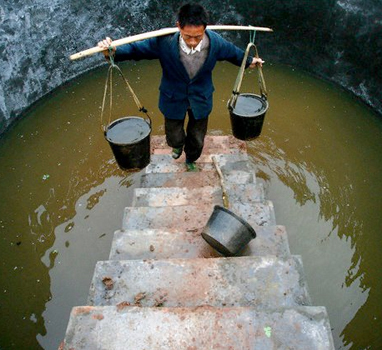
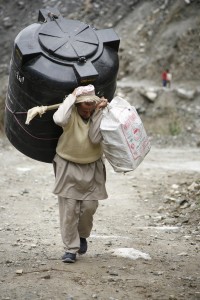

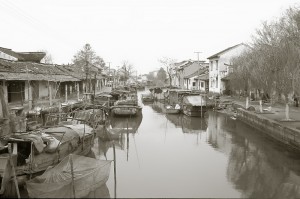
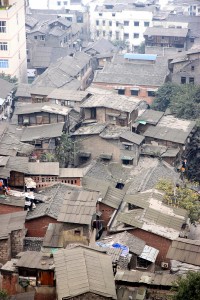

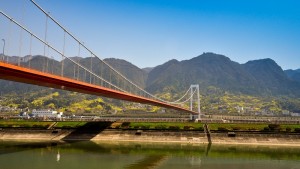

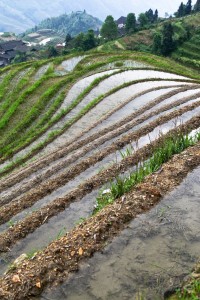


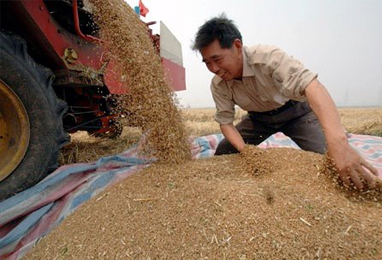
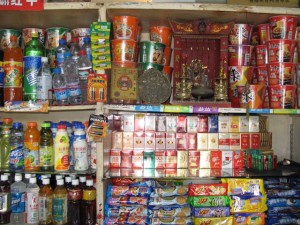

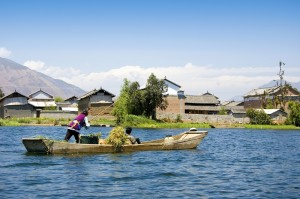
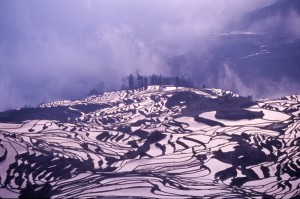
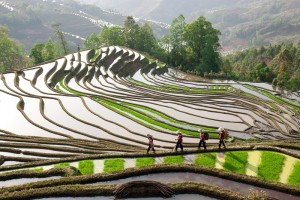
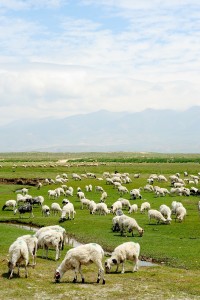
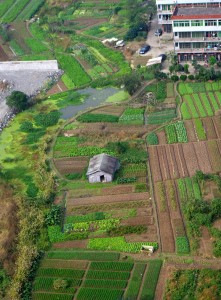
 China is answering these challenges by significantly investing in agricultural technologies including artificial intelligence, big data, robotics, and automation. Not only will these technologies help improve the efficiency and sustainability of China’s agricultural market, but they also represent a big and rapidly growing global business. The market for global agricultural robots, for instance, is projected to exceed $20 billion by the end of 2025, with growth in precision agriculture as a major driver. Artificial intelligence, automation, big data, and robotics are expected to find applications in everything from herding and fish farming to planting and harvesting. Other uses include seeding, irrigation, water leak detection, fertilizing, crop weeding, spraying, crop monitoring and analysis, disease and pest identification and eradication, thinning and pruning, and tracking the growth of plants. In addition to robotics, drones are also increasingly being used to monitor crops, conduct field analysis, manage livestock, plan interrogation and crop spraying. Drones aid farmers to see the big picture of their farmland and to make educated decisions that help to maximize crop yields.
China is answering these challenges by significantly investing in agricultural technologies including artificial intelligence, big data, robotics, and automation. Not only will these technologies help improve the efficiency and sustainability of China’s agricultural market, but they also represent a big and rapidly growing global business. The market for global agricultural robots, for instance, is projected to exceed $20 billion by the end of 2025, with growth in precision agriculture as a major driver. Artificial intelligence, automation, big data, and robotics are expected to find applications in everything from herding and fish farming to planting and harvesting. Other uses include seeding, irrigation, water leak detection, fertilizing, crop weeding, spraying, crop monitoring and analysis, disease and pest identification and eradication, thinning and pruning, and tracking the growth of plants. In addition to robotics, drones are also increasingly being used to monitor crops, conduct field analysis, manage livestock, plan interrogation and crop spraying. Drones aid farmers to see the big picture of their farmland and to make educated decisions that help to maximize crop yields.
